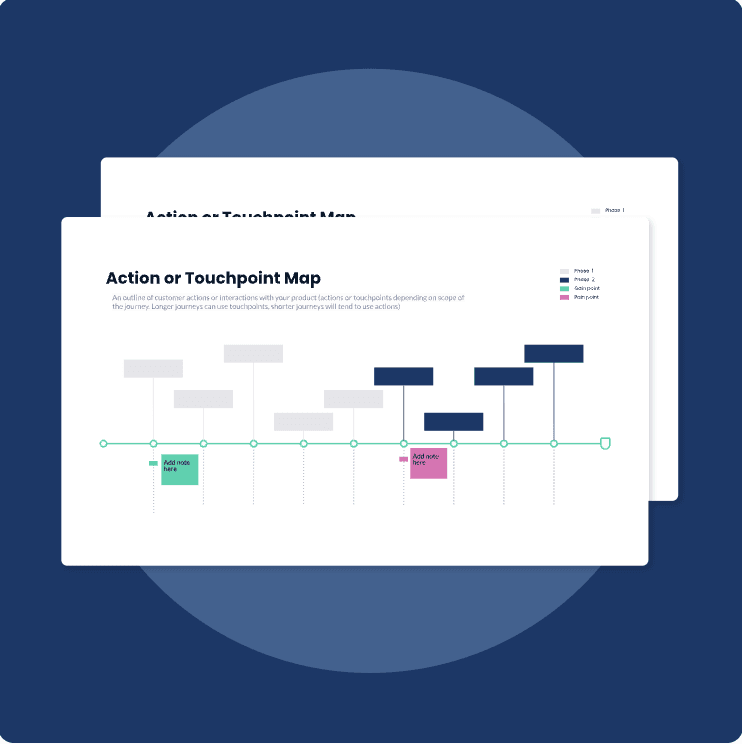Updated: July 31, 2025- 19 min read
As Steve Jobs famously said, “People don’t know what they want until you show it to them.” We agree. But simply showing a product isn't enough — getting users to embrace it is the challenge. Not as a nice-to-have, but as a must-have.
Today, companies that excel at product adoption thrive; those that don’t struggle. Billions are spent on creating the next best 'mousetrap,' yet many products are met with lukewarm responses — or outright rejection.
In fact, nearly 30,000 new products hit the market each year, but according to Harvard Business School professor Clayton Christensen, 95% of them end up failing. Even innovative products that shake up entire categories are not immune to failure; nearly half of the first movers exit their industries altogether.
Consider the cases of Google Glass or Amazon Fire Phone — great products, great companies, large existing audience... Despite massive investment and initial hype, they flopped. These failures highlight the critical need for better understanding and measuring product adoption.
Focusing on key product adoption metrics is one of the most effective ways to increase your odds of success. By tracking what matters, you can better optimize for growth, improve user retention, and avoid the pitfalls that often come with new product launches.
Product Launch Checklist
Launch is a critical time that can make the difference between product success and failure. Use this checklist to make sure nothing falls through the cracks.
DOWNLOAD CHECKLIST
What Are User Adoption Metrics?
We tend to isolate metrics on new users, not just average across all of our customers because we find that their needs are different from the customers that started using Instacart four or five years ago.
— Daniel Danker, CPO at Instacart, on The Product Podcast
Product adoption metrics help you understand how users are interacting with your product — a new app, software, or even a physical gadget. Think of these product metrics as a set of clues that reveal how users are warming up to your product. With this insight, you understand how quickly users realize its value and how likely they are to keep using it.
These metrics don’t just track engagement; they also highlight friction points in the user experience, like:
Are users dropping off after the first use?
Are they struggling to complete certain steps?
Are users returning regularly or just trying it once and leaving?
Are users fully exploring the product, or are they sticking to only one or two features?
Are users taking longer than expected to reach the product’s core value?
By analyzing this data, you can spot patterns and make smarter decisions. The possibilities are nearly endless — you can fine-tune onboarding, enhance popular features, avoid feature creep, or rethink those that aren't getting much love.
In short, product adoption metrics offer a clearer picture of user behavior. They’re the numbers that turn hunches into insights, helping you optimize product experience, increase engagement, and ultimately fuel product-driven growth.
14 Key User Adoption Metrics to Calculate
Tracking the right metrics is like having a roadmap for your product’s success. Each metric tells a different story about how users engage, what’s working, and where things might need a tweak.
Let’s dive into some key metrics that will give you a clearer picture of what’s driving growth and where you might be leaving opportunities on the table.
1. Product Adoption Rate
Product adoption rate tells you how many of your new users actually start using the product after signing up. It’s a direct indicator of how well your user onboarding process, initial messaging, and product value align with user stories and expectations.
If this rate is high, you’re effectively communicating the product’s value from the start. But if it’s low, it suggests a mismatch between expectations and experience.
Here is how to calculate the product adoption rate:

Product adoption rate is generally easy to track but requires regular product analysis to reveal trends.
To be specific, look at how adoption varies across user segments, such as industries, geographic locations, or use cases. This can help you pinpoint where product adoption is strong and where it needs work. You’ll want to tailor messaging or improve onboarding based on specific user groups.
While common analytics tools offer this metric, you may need to customize tracking to focus on different segments or user behaviors, especially in a complex product mix.
2. Feature Adoption Rate
While overall adoption matters, it’s equally important to understand which specific features users are engaging with. Feature adoption rate gives you a clearer picture of which parts of your product are most valuable to users and which ones might be underperforming.
For example, your product may have a low adoption rate, suggesting users don’t find product useful, aren’t aware of it’s possibilities, or find it hard to navigate. By monitoring feature adoption you can run product feature analysis. You can determine if users need better onboarding for specific features, improved UI/UX design, or simply clearer communication about its benefits.
Here’s the feature adoption rate formula you can use:

To track this effectively, segment users by behavior and interaction patterns — like those who only use one feature regularly versus those who explore multiple features. While some product analytics tools offer built-in feature tracking, deeper insights may require custom event tracking.
3. Time-to-First Key Action
Time-to-first key action measures how quickly users engage with a critical product feature or achieve a major milestone. This includes completing a profile, making a purchase, or reaching an “Aha moment.”
This metric is essential because it shows how long it takes for users to experience the product's core value. If this time is long, it could mean the onboarding is too complex, the product is difficult to navigate, or users are not guided effectively.
Here’s how to calculate:

Analyzing this metric can help you identify roadblocks in the user flow.
For instance, if users consistently delay their first key action, you may need to adjust the onboarding flow with tooltips or contextual help. Fast time-to-value tends to boost retention rates and user satisfaction. That is why it’s a crucial metric for product managers.
4. Percentage of Users Performing First-Time Key Actions
This metric focuses on how many users reach a crucial milestone for the first time. It’s a more specific take on the product adoption rate. It’s aimed at evaluating how well users are engaging beyond the initial steps.
Tracking the percentage of users who achieve this first milestone helps you understand how effective your onboarding and initial user experience are. It also provides insights into where users might be dropping off, allowing you to make targeted improvements.
Here’s your calculus:

If only a small percentage of users are completing the first-time key action, it could signal that the process is confusing, too lengthy, or lacks the necessary prompts and support. Identifying where users stop progressing helps you refine the product experience.
In terms of integrating this metric in your dashboards, you may want to seek the help of Data Product Managers or analytics experts. Defining what counts as a “key action” and segmenting users based on different behaviors may require additional configuration.
5. Daily/Monthly Active Users (DAU/MAU)
Daily Active Users (DAU) and Monthly Active Users (MAU) metrics measure the number of users engaging with your product on a daily or monthly basis.
While they are simple measures of user activity, they offer deeper insights when combined. For example, dividing DAU by MAU provides a “stickiness ratio,” showing how often users are returning within a month. A high stickiness ratio suggests users find your product valuable enough to come back regularly, while a low ratio may point to lack of consistent value or engagement.
This is how you calculate DAU/MAU in particular:

DAU/MAU is useful for spotting trends in user engagement over time, like whether there’s a seasonal dip in usage or a sudden drop after a product update. These metrics are commonly available in product management tools.
6. Activation Rate
Activation rate measures the percentage of users who complete a significant action during onboarding. This action varies by product — it could be filling out a profile, setting up key preferences, completing a tutorial, or any task that aligns with the product’s core value.
A high activation rate indicates that users are quickly understanding and interacting with the product’s primary features. It sets the stage for further engagement and retention. If the activation rate is low, it could mean that the onboarding flow is confusing. Improvements like shortening the onboarding steps, adding in-app prompts, or using tooltips to guide users can boost this rate.
This is how you calculate this metric:

Activation rate reflects how well your product delivers its promise in the early stages. For product teams, this is a strong indicator of how effective the onboarding process is at guiding users toward a valuable first experience.
Activation rate is often tracked with analytics tools, but defining the most meaningful activation event requires careful thought and testing.
7. Churn Rate
The churn rate measures the percentage of users who stop using your product over a specific period. It’s a rock star among metrics.
Churn can happen for various reasons: users may not find ongoing value, they might encounter frustrating issues, or they could be drawn to competitors. Churn is typically divided into voluntary churn (users who actively cancel or stop using the product) and involuntary churn (users lost due to failed payments or technical issues).
Typically, you would calculate the churn rate using a formula:

With churn it’s best if you look at it within context. If churn spikes after a specific feature update, it’s likely a sign that users weren’t happy with the change. If churn remains high over time, it might indicate that the product isn’t satisfying customer experience or that the value fades after initial use.
Engaging churned users through surveys or exit interviews can offer valuable insights into areas for improvement. The good news is that the churn rate is a standard metric in most analytics tools, so it’s not a hassle to draw conclusions from it.
8. Retention Rate
Retention rate measures how many users continue to use the product over a defined period, typically monthly, quarterly, or annually. This metric offers a direct look at how well your product retains users and delivers sustained value.
A high retention rate means that users find ongoing benefits in the product, while a low rate indicates potential issues with user satisfaction, feature engagement, or market fit.
Here’s your calculus:

For product teams, retention rate is a fundamental indicator of long-term success. It can be broken down by user cohorts, allowing teams to see how different user segments engage over time.
Retention rate is often linked to recurring revenue in subscription models, making it an essential metric for SaaS products. While most analytics tools offer retention tracking, deeper insights can be achieved by segmenting users by behavior, industry, or other characteristics.
9. Cost Per Acquisition (CPA)
Cost-per-acquisition (CPA) measures the average cost of acquiring a new user or customer. It considers all marketing and sales expenses.
While it’s not purely a product adoption metric, it’s crucial for understanding the financial efficiency of Product-led Growth Strategies. Lower CPA suggests cost-effective user acquisition, while higher CPA can signal inefficiencies or overly broad targeting in product marketing efforts.
CPA calculation:

It’s essential to strike a balance — if CPA is high but users retain well and generate significant revenue, it might still be worth the investment. On the other hand, low CPA with low retention could indicate that you’re attracting the wrong users.
Effective management of CPA often involves cross-functional collaboration between product, marketing, and sales teams. It’s typically tracked within marketing analytics tools, but linking it to product usage data can offer a more complete view of user value.
10. Average Usage Frequency
Average usage frequency measures how often users engage with your product within a given timeframe, such as daily, weekly, or monthly. Unlike daily or monthly active users, which simply count unique users, average usage frequency shows how integral the product is to users’ routines.
Typically you would calculate average usage frequency like this:

Higher usage frequency suggests that the product is becoming a core part of users’ workflows. Lower frequency, in contrast, could signal that users see it as more of a “nice-to-have” rather than essential.
For product teams, this metric offers insights into which user segments are most engaged and why. It can also highlight which features drive repeated use and which might need more attention to encourage regular interaction. If the average usage frequency is low, consider whether users need more prompts, better onboarding for specific features, or improved notifications to remind them of the product’s value.
Analytics tools can often track this metric, but segmenting by feature or user cohort can provide more actionable insights.
11. Net Promoter Score (NPS)
Net Promoter Score (NPS) measures how likely users are to recommend your product to others, typically on a scale of 0 to 10. Aside from offering added insight into customer discovery, NPS also provides insights into user loyalty, satisfaction, and overall product sentiment. It’s one of the most widely used metrics — it captures not just satisfaction but also potential word-of-mouth growth.
The NPS formula is rather straightforward:

If you’re wondering who promoters or detractors are, here’s the gist:
Promoters: Users who respond with a score of 9 or 10, indicating they are highly likely to recommend the product.
Detractors: Users who respond with a score of 0 to 6, indicating they are unlikely to recommend the product.
Passives: Users who respond with a score of 7 or 8. They are not included in the NPS calculation but are considered neutral.
The NPS score ranges from -100 to +100:
A positive NPS (above 0) is generally considered good.
An NPS above 50 is considered excellent.
An NPS below 0 suggests more detractors than promoters, indicating areas for significant improvement.
A high NPS indicates that users are not only satisfied but also enthusiastic enough to promote the product. Conversely, a low NPS signals dissatisfaction. It prompts teams to dig into why users are detractors. Analyzing qualitative feedback from follow-up questions can reveal whether the issues lie in product usability, performance, or missing features.
NPS is relatively simple to gather, often through regular user research and surveys. To enrich NPS, you can break it down by user type, geography, or specific use cases to uncover trends and refine product marketing strategy. Most user analytics tools can track NPS, making it easy to implement and monitor over time.
12. Customer Satisfaction Score (CSAT)
Customer Satisfaction Score (CSAT) measures user satisfaction with a specific interaction, feature, or overall experience. It’s usually collected through a survey where users rate their satisfaction on a scale (e.g., from 1 to 5). CSAT helps to understand how well your product meets user expectations, as it captures immediate sentiment.
To calculate CSAT you would apply the formula:

Number of Satisfied Responses: The count of users who select the highest ratings (usually 4 or 5 on a 5-point scale).
Total Number of Responses: The total number of survey responses received.
CSAT is typically expressed as a percentage, where a higher score indicates greater customer satisfaction. For instance, a CSAT score of 80% means that 80% of users are satisfied with their experience.
While NPS measures overall loyalty, CSAT is more granular and situation-specific. It’s particularly useful for assessing user reactions to new features, support interactions, or specific stages in the user journey, like onboarding or checkout.
A high CSAT means that users are pleased with the experience, while a low CSAT can indicate issues that need immediate attention.
CSAT is relatively easy to implement through pop-ups, in-app surveys, or post-interaction forms. It is a straightforward metric to gather in most analytics tools.
13. Time to Value (TTV)
Time to Value (TTV) measures the average time it takes for users to experience the core benefit of your product. It’s about the speed at which users reach their first “Aha moment,” where they truly understand the product’s value. The shorter the TTV, the better, as it suggests that users are quickly finding the product beneficial.

If users take too long to realize value, they may abandon the product before understanding its potential. Analyzing TTV helps teams identify friction points in the onboarding process or product setup, such as overly complex steps or unclear guidance. Shortening TTV can involve simplifying initial interactions, offering guided onboarding, or highlighting key features early on.
Unlike some metrics, TTV can be more challenging to measure. It requires clearly defining what constitutes “value” for different users. It often requires custom tracking and analysis, as the key action that signifies value varies across products and user groups. Nevertheless, it’s a powerful metric for aligning onboarding strategies with user needs and expectations.
14. Average Time Spent Using the Product/Feature
This metric offers insights into the depth of user engagement and how much time users are willing to invest in interacting with your product. A high average time can suggest that users find the product or feature engaging, while a low average time might indicate a lack of interest or issues with usability.

Interpretation of this metric depends on the context of the product. For example, in productivity tools, shorter times might indicate efficiency, whereas in entertainment or content-driven platforms, longer times might be a sign of success. Analyzing this metric helps teams understand which features users find the most engaging and which areas might need improvements.
For product teams, average time spent is useful for refining feature design, improving user flows, or adjusting the content to match user preferences. It’s commonly tracked in analytics tools and can be easily segmented by user type, feature, or session length to provide more granular insights.
Strategic Tips for Analyzing Product Adoption Metrics Effectively
It’s not just collecting metrics, it’s making sense of what they reveal about user behavior. This is what product teams need to prioritize if they want to make improvements that reap fruit. Here are some ways to dig deeper into these metrics and get richer insights.
1. User Context is Key
Instead of treating product metrics as standalone data points, emphasize how user behavior changes across different stages of the user journey. For example, low activation rates during onboarding might mean a complex setup, while low usage frequency after initial activation could suggest a lack of ongoing value.
2. Segment for Deeper Insights
Break metrics down by user segment — whether it's by industry, location, or customer size. It’s about understanding who is adopting the product well and who isn’t. Different metrics will be more relevant for different segments of your potential users depending on where they are on the technology adoption curve. Segmenting can reveal surprising differences, like enterprise users adopting products more slowly than SMBs (Small to Midsize Business), or international users facing language-based friction.
3. Track Trends Over Time, Not Just Single Points
A metric snapshot is useful, but trends over time are where the real insights lie. For instance, declining user retention could signal deeper, longer-term issues than a single dip would suggest. Analyzing trends helps identify whether changes to the product, marketing, or user onboarding are truly driving adoption.
4. Correlate Metrics with User Feedback
For a more complete understanding, pair adoption metrics (quantitative data) with qualitative insights from user surveys or interviews. For example, correlating NPS scores with churn rate can clarify whether dissatisfied users are indeed the ones leaving, while CSAT scores can be tied to activation journeys to see where users encounter friction.
5. Focus on “Aha Moments”
Understanding metrics related to key actions (like Time-to-First Key Action or Activation Rate) helps you identify when users reach their “Aha moment.” Dive into why some users reach this moment faster than others, and optimize your product experience to accelerate it.
6. Use Metrics to Adjust Onboarding and Engagement
Metrics like Activation Rate or TTV are usually the signals for onboarding improvements. Use these insights to adjust onboarding flows, in-app guides, or user messaging strategies. For instance, if users take too long to activate, a simplified tutorial might help.
7. Identify and Address Drop-Off Points
Use metrics to locate where users typically drop off in the journey. For example, if you see a steep decline in DAU/MAU ratios or churn spikes after a certain feature interaction, it may signal poor product design, unclear value, or a confusing user interface.
8. Metrics as Predictors of Revenue
Certain metrics like CLTV and Retention Rate can be strong predictors of future revenue. Explain how improving these metrics not only boosts user adoption but also has a direct impact on revenue growth, making them critical for Product-led Growth.
9. Bridge Metrics and Product Roadmap Decisions
Explain how metrics don’t just reflect past performance — they can inform future product strategy and product roadmap. For instance, if a feature has low adoption, consider revisiting its design or its relevance to users. Use Feature Adoption Rate insights to guide whether to double down on a feature or pivot away.
10. Consider Trade-Offs Between Metrics
Improving one metric can sometimes negatively impact another. For instance, a quick reduction in TTV might boost activation but could lead to a higher churn rate if users feel rushed. Be clear that metrics are interconnected and should be balanced thoughtfully.
Be Thoughtful About Customer Adoption Rate
The most successful product teams are not the ones that focus on a single metric or collect an endless batch — it’s those that approach metrics thoughtfully. Why behind collecting certain metrics come before what metrics to collect.
So, be smart, be thoughtful, and stay organized about your approach to customer adoption metrics — it’s a strategy that not only pays off but sets the foundation for sustainable growth.
Free Customer Journey Map
Put yourself in your customers’ shoes to find the problems in your user experience (and uncover opportunities to solve them).
Download here
Updated: July 31, 2025





